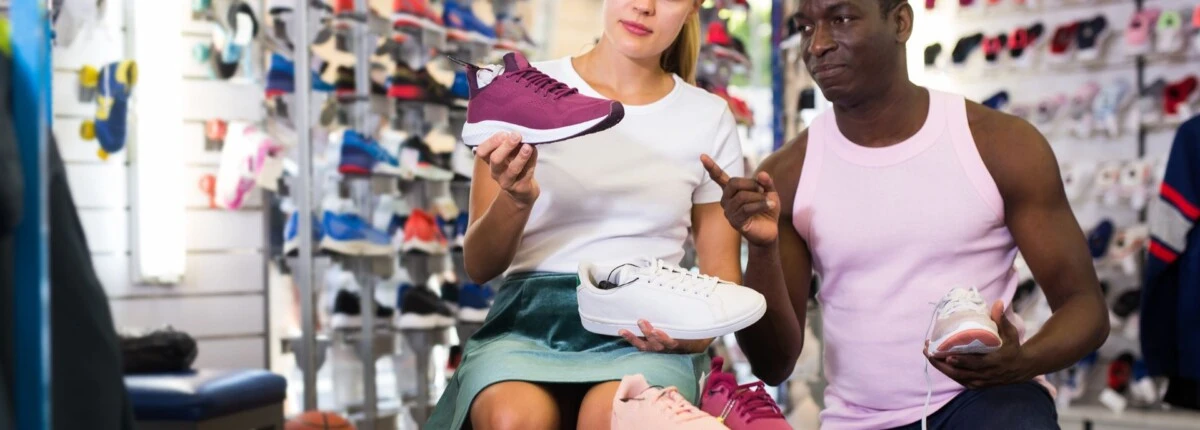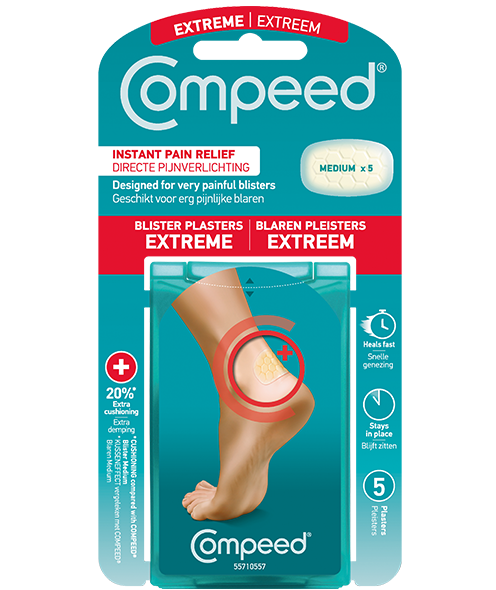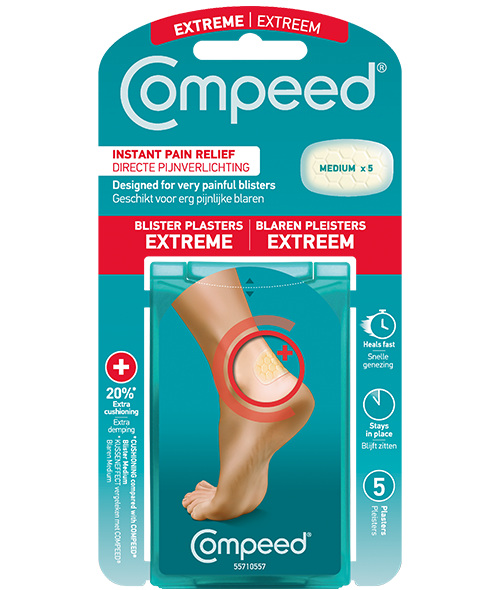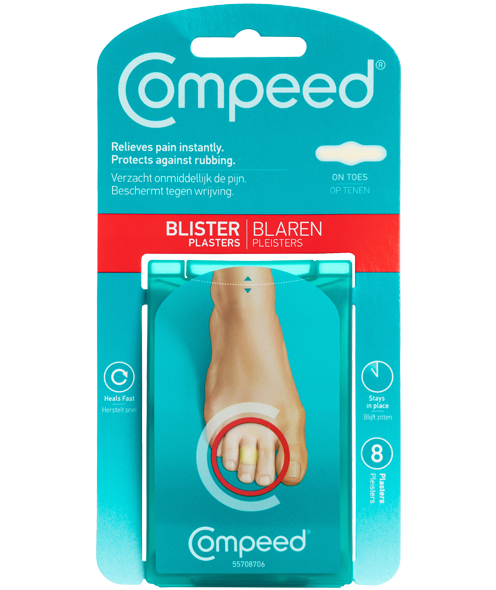Every step you take – whether walking, running or playing your favourite sport – takes its toll on the delicate architecture of your feet; they are your point of contact with the world, and the first line of defence when it comes to maintaining balance and protecting your joints during daily activity. So your feet take care of you – but are you doing enough to take care of them?
Too often we take our feet for granted, assuming that these corporeal stalwarts are too hardy to come to harm. But active feet need active foot care – because putting your feet through their paces always has an impact, and looking after them properly will help ensure they stay healthy and injury-free in the long run.
With that in mind, we’ve compiled some essential foot care tips for people who lead active lifestyles; a guide to keeping your feet in optimal condition for your daily routine or workout regime.
The right footwear: armour for your feet
You wouldn’t get on a motorcycle without a properly fitted helmet made of appropriate materials; likewise, you shouldn’t be walking or running around without the appropriate footwear to protect and support your feet. There are several factors to consider when choosing a shoe:
Fit: A shoe that doesn’t fit properly can increase the chances of you losing your footing, twisting an ankle or developing blisters and other sore areas on your feet. Whether too tight or too loose, an ill-fitting shoe can decrease your stability and increase friction against your skin, making falls and blisters more likely.
Support: The more active you’re being, the greater the impact on your feet. When running, for example, you’ll want shoes with proper arch support and sufficient cushioning to absorb the shock of your feet hitting the ground. There are also different shoe shapes designed for different types of feet.
Materials: Strenuous physical activity means sweat – and sweat can mean increased friction on your skin. Look for shoes made from breathable and sweat-wicking materials like mesh to prevent excessive moisture building up on your feet.
Socks: Your socks should also be made of moisture-wicking material that draws sweat away from your skin to reduce friction, and should fit well without wrinkles or bunching that could cause rubbing within your shoe. You might even want to consider double-layered socks, which have a lining that moves independently of the outer layer to minimise friction.
Finally, don’t just hang onto your gear until it falls apart – repeated use diminishes the cushioning and protective qualities they’re designed to provide. Runners, for example, should be looking to replace their footwear well before the cushioning and support is damaged, after approximately every 300-500 miles run.


Cleanliness is next to healthiness
The more active your lifestyle, the more you sweat, and the more prone you become to conditions such as athlete’s foot, fungal infections and blisters. Fortunately there is a simple preventative measure you can take to avoid these issues: regular, basic hygiene.
Daily washing: make sure you clean your feet with soap and water after any physical activity – and don’t neglect the areas between your toes! But always ensure that you dry your feet thoroughly afterwards, especially between the toes.
Look after your toenails: trimming regularly is the best way to avoid the ingrown toenails that active individuals are prone to. Don’t cut too close to the skin, and always cut your nails straight across (rather than in a curve).
Consider foot powder: if your feet get especially sweaty, using an antifungal foot powder can help stave off the excess moisture that might lead to fungal infections.
Moisturise: if your feet are prone to dry, cracked skin and calluses, using a foot cream or lotion can help. However, avoid applying it between the toes – an area that it’s always best to keep as dry as possible.


Strong feet are happy feet
Don’t forget to include your feet in any warm-up or warm-down you do before or after a workout; exercising and stretching your feet helps improve flexibility, balance and strength – all of which help prevent injury and improve performance.
Toe stretch: gently pull your toes up and down, holding for 30 seconds each way. You can do this while sitting in a chair.
Arch stretch: roll a tennis ball or foam roller under your foot for a few minutes to massage and stretch the arch.
Toe lifts: lift your toes while standing flat on the ground, keeping your heels in contact with the floor.
Towel scrunches: use your toes to scrunch up a towel placed on the floor under your feet; this helps improve dexterity and reduce the risk of cramps.
Rest, recover, repeat
Any physical activity you do needs to be bookended by periods of rest and recovery. Your feet – and your body generally – needs time to heal and recuperate before your next workout. Here are a few things you can do to aid recovery.
Raise the feet: after a long run or hike, elevate your feet for 15-20 minutes to reduce swelling and improve circulation.
Ice baths: particularly intense activity can lead to sore and swollen feet, in which case you might benefit from soaking them in cold or icy water for 10-15 minutes to help soothe the tissue.
Foot massage: gently massaging your feet – or, better still, cajoling someone else to massage them – can help ease the tension in your muscles and improve blood flow after a workout.


Listen to your feet
Sometimes we get so wrapped up in our favourite activities that it’s tempting to push through any pain, but ignoring the warning signs your feet send you can lead to injury and even long-term issues. Listen to your feet, and address any issues immediately to prevent them getting worse.
Blisters: even with the best-fitting footwear in the world, we are all still occasionally prone to blisters. Get ahead of blisters with a Compeed blister plaster to protect the affected area, cushion it from painful rubbing and promote healing. With Compeed on hand, there’s no chance of a blister disrupting your workout routine.
Plantar fasciitis: overuse of the feet can lead to conditions like plantar fasciitis, which manifests as pain in the arch and heel of your foot. Don’t push through: rest, ice and stretch to soothe the symptoms, and consult a healthcare professional if the pain persists.
Heel pain: this can be a sign of Achilles tendonitis or heel spurs – perhaps indicating that your shoes have insufficient cushioning. You can alleviate the symptoms by stretching your calves and resting the foot – but again, if the pain continues, consult a healthcare professional.
Look after your feet and they’ll look after you
A healthy foot provides the stability and protection you need for your workout regime to keep running smoothly and painlessly. They go through intense pressure when absorbing the shocks of the activities you put them through; so do yourself a favour and take care of your feet, so they can keep taking care of you.









